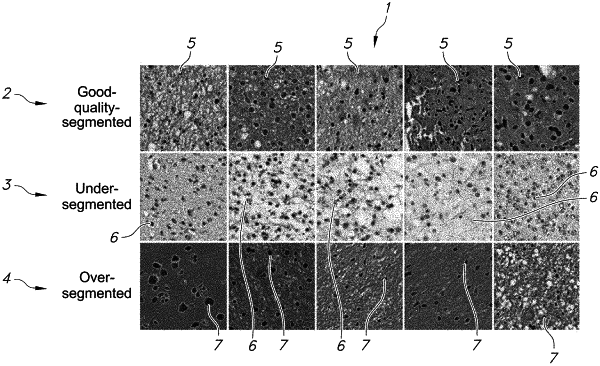| CPC G06T 7/0012 (2013.01) [G06F 18/214 (2023.01); G06F 18/217 (2023.01); G06F 18/2431 (2023.01); G06T 7/0002 (2013.01); G06T 7/11 (2017.01); G06T 7/136 (2017.01); G06T 7/41 (2017.01); G06V 10/774 (2022.01); G06V 20/695 (2022.01); G06T 2207/20021 (2013.01); G06T 2207/20081 (2013.01); G06T 2207/30024 (2013.01); G06T 2207/30168 (2013.01); G06T 2207/30181 (2013.01)] | 14 Claims |

|
1. A system for predicting segmentation quality of segmented objects implemented in the analysis of copious image data, the system comprising:
a quality assessment engine including a computing device configured to train the system during a training phase by performing operations comprising:
receiving a collection of image data related to a particular type of data;
partitioning the image data into segmented data portions based on an object associated with the collection of image data;
determining regions of interest associated with the segmented data portions;
determining quality of segmentation of the segmented data portions for respective classification of the regions of interest, the quality of segmentation being determined based on patch-level intensity and texture features associated with the image data;
assigning a classification label to the regions of interest, the classification label describing a quality of segmentation of the objects associated with the segmented data portions;
partitioning regions of interest into sub-regions;
computing a set of intensity and texture features for each of the sub-regions of the segmented data portions; and
generating a training dataset based on the computed intensity and texture features for the sub-regions in order to train a classification model based on a predetermined threshold value; and
the computing device in the quality assessment engine being configured to predict segmentation quality during a prediction phase by performing operations comprising:
receiving test images to iteratively classify segmented data portions based on an object associated with the test images, using the trained classification model; and
predicting the segmentation quality of segmented objects in the test images based on the trained classification model.
|